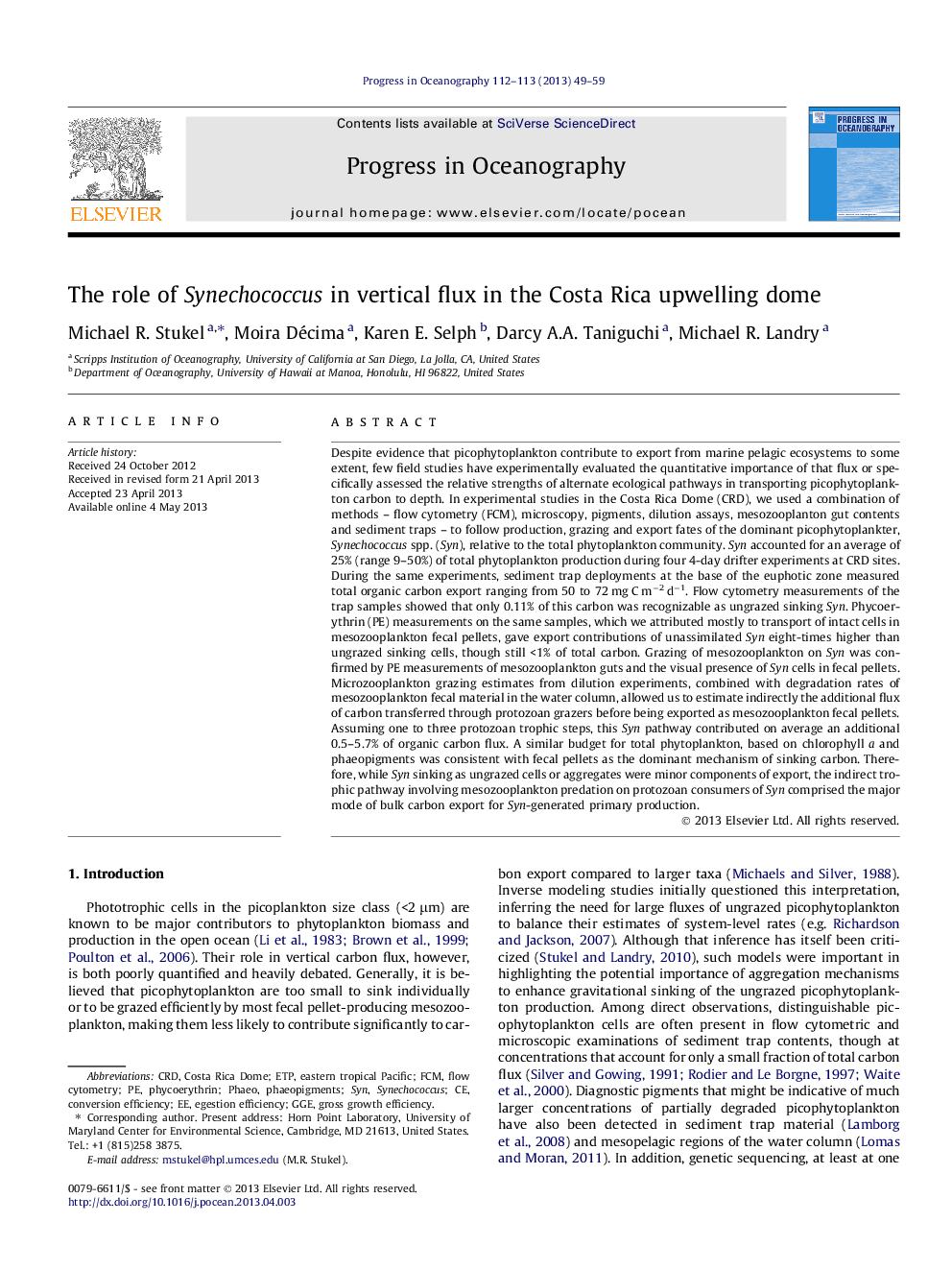| کد مقاله | کد نشریه | سال انتشار | مقاله انگلیسی | نسخه تمام متن |
|---|---|---|---|---|
| 6388779 | 1627942 | 2013 | 11 صفحه PDF | دانلود رایگان |

- Synechococcus (Syn) was traced through the CRD ecosystem and into sediment traps.
- Total POC export in the CRD averaged 50-70 mg C mâ2 dâ1.
- â¼0.1% of POC export was attributable to direct sinking of ungrazed Syn.
- Trophic pathways through grazers supported most exported Syn, but were a minor term.
- Fecal pellets of herbivorous mesozooplankton were responsible for most carbon flux.
Despite evidence that picophytoplankton contribute to export from marine pelagic ecosystems to some extent, few field studies have experimentally evaluated the quantitative importance of that flux or specifically assessed the relative strengths of alternate ecological pathways in transporting picophytoplankton carbon to depth. In experimental studies in the Costa Rica Dome (CRD), we used a combination of methods - flow cytometry (FCM), microscopy, pigments, dilution assays, mesozooplanton gut contents and sediment traps - to follow production, grazing and export fates of the dominant picophytoplankter, Synechococcus spp. (Syn), relative to the total phytoplankton community. Syn accounted for an average of 25% (range 9-50%) of total phytoplankton production during four 4-day drifter experiments at CRD sites. During the same experiments, sediment trap deployments at the base of the euphotic zone measured total organic carbon export ranging from 50 to 72 mg C mâ2 dâ1. Flow cytometry measurements of the trap samples showed that only 0.11% of this carbon was recognizable as ungrazed sinking Syn. Phycoerythrin (PE) measurements on the same samples, which we attributed mostly to transport of intact cells in mesozooplankton fecal pellets, gave export contributions of unassimilated Syn eight-times higher than ungrazed sinking cells, though still <1% of total carbon. Grazing of mesozooplankton on Syn was confirmed by PE measurements of mesozooplankton guts and the visual presence of Syn cells in fecal pellets. Microzooplankton grazing estimates from dilution experiments, combined with degradation rates of mesozooplankton fecal material in the water column, allowed us to estimate indirectly the additional flux of carbon transferred through protozoan grazers before being exported as mesozooplankton fecal pellets. Assuming one to three protozoan trophic steps, this Syn pathway contributed on average an additional 0.5-5.7% of organic carbon flux. A similar budget for total phytoplankton, based on chlorophyll a and phaeopigments was consistent with fecal pellets as the dominant mechanism of sinking carbon. Therefore, while Syn sinking as ungrazed cells or aggregates were minor components of export, the indirect trophic pathway involving mesozooplankton predation on protozoan consumers of Syn comprised the major mode of bulk carbon export for Syn-generated primary production.
Journal: Progress in Oceanography - Volumes 112â113, MayâJune 2013, Pages 49-59